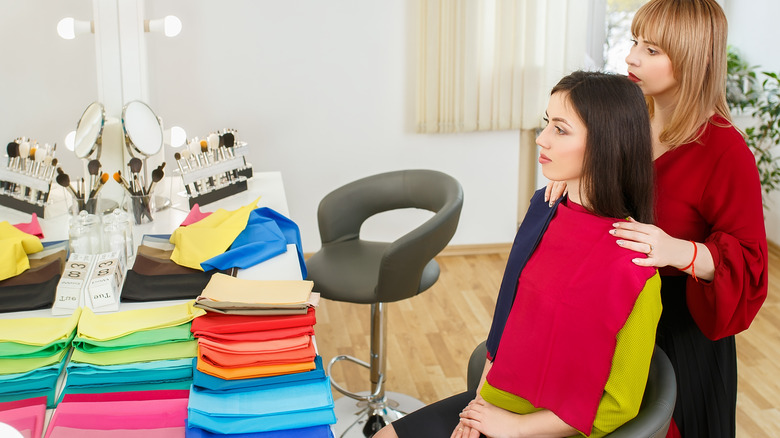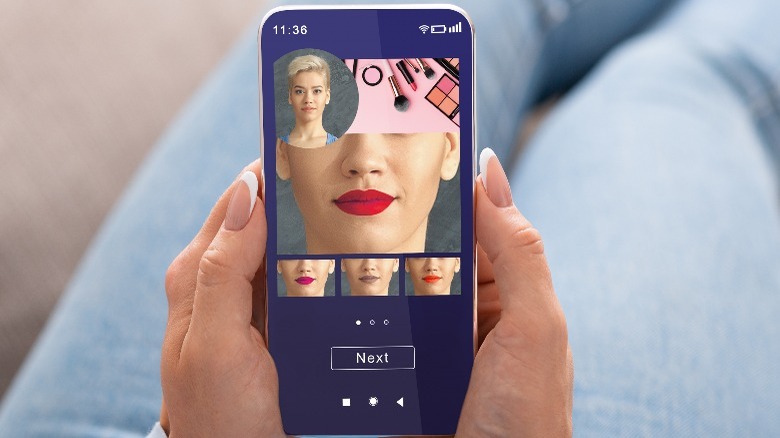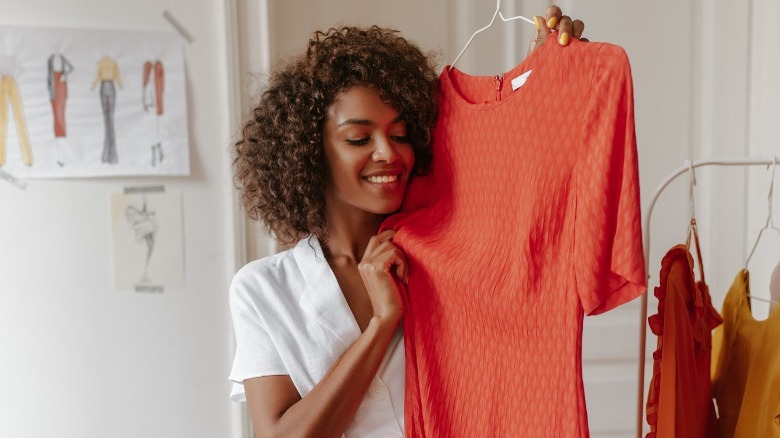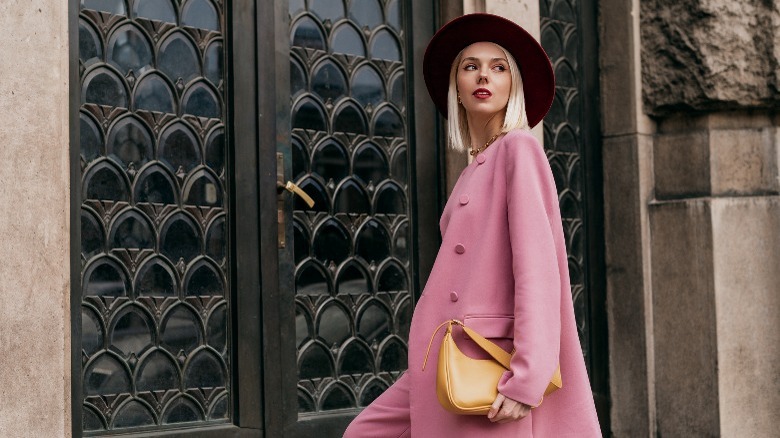Color Analysis Is Way More Complex Than Viral Videos Make It Seem - But It's Well Worth Digging Into
Soft autumn, light spring, deep winter: These sound like poetic descriptions, but they're actually terms from color analysis, the trendy personal styling method that's been filling our TikTok feeds.
You might be familiar with this video format: a floating face surrounded by a color wheel, discussing which palette suits them best. Or, for a slightly more sophisticated take on color theory, the four quadrants of color, where the user can see the small differences between shades. These videos are all in good fun, but they are only making a vague hip check against real color theory and analysis.
Color analysis takes every aspect of an individual's skin tone and undertone into account to determine which shades and tones are most flattering to the person. Unlike the generalizing TikTok filters, in-depth color analysis can give you new insight into how you can use color in your clothing and makeup to have effortless beauty and a unique signature style.
What is color analysis?
Color analysis looks at various elements of natural coloring, such as tone and depth, to find your colors for beauty and fashion. The method is based on the four seasons: winter, spring, summer, and autumn. Winter and summer are the dark and light cool palettes, respectively, while autumn and spring represent the dark and light warm palettes. Each season contains subtypes for more specific color ranges, with most analysis systems having a total of 12 to 16 palettes.
While seasonal color analysis has become a big trend on TikTok, aligning perfectly with Gen Z's love of beauty typing, it's actually one of the older styling methods out there, dating back to the 1970s. The book "Color Me a Season" by Bernice Kentner was published in 1979 and defined color seasons based on skin tone. A year later, in 1980, "Color Me Beautiful" by Carole Jackson was released, which was not only a book on color theory but also a branded service that provided color swatches and makeup products.
The resurgence of color analysis makes sense for TikTok and other video platforms: The visual medium is convenient for quickly looking at a wide range of color samples and making tutorials for other people without having to order dozens of books and swatches through the mail. However, the speed and simplicity of color analysis on TikTok can remove a lot of the nuance of color theory and make the concepts far less applicable to everyday styling.
Color analysis is subjective
You won't get much useful information from video filters or color theory apps because color analysis is entirely subjective and requires in-person observation. There are numerous schools of thought on what the core color palettes should be and how they're determined, and each one might give you a different result. There are popular systems from books such as "Color Me Beautiful" and methods inspired by the work of designers and personal stylists. Each system offers its own perspective on how depth and contrast affect color in the material world.
Very few people precisely align with one color palette in the way popular videos suggest. The pigments produced by nature are infinitely more complex than any color categories you can invent, which is why color analysis is best used as a tool for articulating your observations, rather than as a codex for human appearances. Some stylists even insist that color analysis be left to the professionals studying color theory, as the systems can be easily misinterpreted and poorly applied by someone trying to make decisions about their clothes or makeup. If you do want to find your color palette without professional consultation, you'll need to start exploring how colors actually look on you in real life.
How to find your color season
To find your color season, you'll first need to identify your undertones. Your skin undertones matter a great deal when analyzing your color palette. For instance, any skin tone can have warm, cool, or neutral undertones. You can figure out your undertones by comparing colors against your skin to see which ones are most harmonious. Lay the color samples against your skin under natural lighting and use materials you would actually wear, like fabric or makeup. Some of the most helpful pairs of colors to look at include gold versus silver, orange versus hot pink, and cream versus pure white.
You also need to consider how light or dark your coloring is for both your skin tone and your hair and eye color. Many of the earlier versions of color analysis had limited examples that disproportionately centered on fair skin colors, but most contemporary analysis methods now recommend thinking about how light or dark your features are in the context of your ethnicity.
Knowing your undertones and the relative darkness of your features will give you your general season, with winter for cool and dark, spring for warm and light, summer for cool and light, and autumn for warm and dark. The subtype seasonal palettes vary depending on the system you use, but typical factors to keep in mind include contrast (how different your skin tone is from your hair and eyes), the prominence of your dark or light features, and the intensity of your undertones.
Using color analysis in your life
Professional stylists and color analysis companies often say that amateurs shouldn't analyze themselves, but that isn't necessarily true. If you really want to find your color palette based on a specific method or system, then yes, you will probably get the best results if you consult with someone who is deeply familiar with that particular color theory. That said, if you aren't attached to an official system, there's no reason why you can't play around with the ideas of color analysis to improve how you use color in your wardrobe.
Seasonal color palettes emphasize harmony; for example, if your coloring is warm and muted, your recommended palette would have warm, muted tones. Theoretically, if you follow your color palette, you'll have a well-coordinated wardrobe that consistently looks good on you. This can be super helpful for building a capsule wardrobe or simplifying your shopping experience. On the other hand, you can use a color system to be more intentional with bold statement pieces. Wear an icy blue to contrast with warm skin or a light pastel that brings attention to dark eyes.
Overall, color analysis is a worthwhile technique for thinking more carefully about how and why you wear certain colors. Although it doesn't provide the quick magic answer that you might perceive in videos on the topic, color analysis certainly has the potential to enhance your style and give you a new sense of confidence in your beauty choices.




